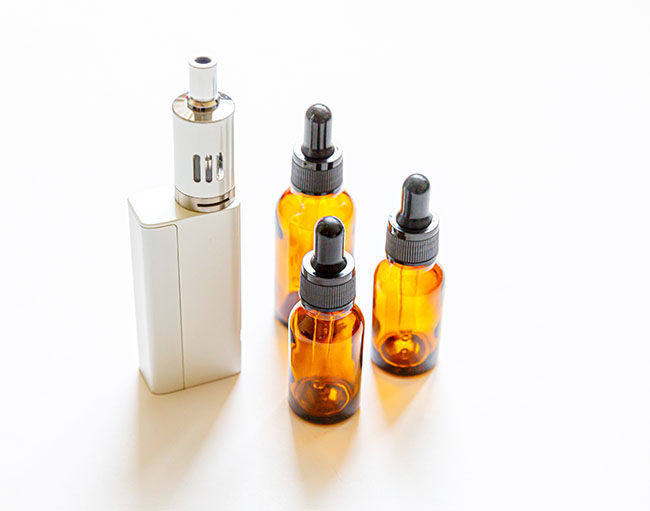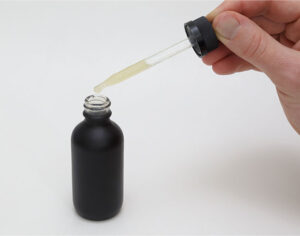THC Vape for Therapeutic Use: Investigating Potential Applications

Introduction
Vaping is a popular way to use medical cannabis. It’s good for THC, which helps with medical issues. Vaping is better than smoking and has become a modern way to take THC (1). THC can help pain and anxiety. Vaping works fast, which is great for quick relief. It also lets patients control their dose and treatment plan. But, vaping has challenges, like safety and proper use. (2)
Unveiling the Therapeutic Landscape of THC: Unlocking its Promising Potential
THC comes from cannabis and makes you feel high. But now, research shows THC can help medically. It’s not just about feeling different anymore. THC might treat many health problems.
Unearthing Therapeutic Prospects
THC used to be known for making people feel good. Now, it’s seen as medicine too. Studies show it can help with pain and other problems. People in pain might find relief with THC. It could also help those with muscle issues like multiple sclerosis. Cancer patients dealing with nausea from treatment might benefit from THC. In mental health, THC oils could calm anxiety and stabilise mood. (3)

Demand for Innovative Delivery Approaches
Doctors are discovering how THC can help medically. They’re also looking at new ways to give it to patients. Vaping is one interesting option. Vaping works quickly and lets doctors control the dose precisely. Trying new methods like vaping helps us get all the good from THC, not just the feeling of being high. (4)

Advantages of THC Vape for Therapeutic Use
Rapid Onset of Effects
Vaping THC is fast and effective. It helps patients quickly. Vaping goes directly to the blood through the lungs, unlike eating. This means relief comes within minutes. This is helpful for sudden pain or anxiety. It’s also good for chronic conditions with unexpected symptoms. Vaping can stop discomfort from getting worse. Quick relief is crucial for migraines and anxiety. Vaping fits well with changing symptoms. It’s better than waiting for traditional methods to work. (5)
Precise Dosage Control
Vaping THC allows exact control over dosage. Patients can adjust it based on their needs. Traditional methods might not be so accurate. Vaping devices have adjustable settings like temperature and power. This lets patients choose the right amount of THC. People’s reactions to THC vary, so precise dosing is important. It prevents too little or too much. Vaping is great for trying different doses to find the best relief. (6)
Reduced Harmful Byproducts
Vaping THC is much safer than smoking. Smoking creates harmful chemicals, but vaping doesn’t. Vaping heats cannabis at lower temperatures, so it doesn’t make toxic things. Vaping vapour mostly has good compounds like THC. It doesn’t have bad stuff from burning. Vaping is better for your health and the environment. It doesn’t produce bad smells or harm your lungs like smoking does. It’s great for people who want THC without hurting their lungs
Ease of Use
Vaping devices are user-friendly and do not require intricate preparation, making them accessible to a wide range of patients.
Comparing Medical THC Vape with Other Methods of THC Administration
Speed of Onset: Vaping THC gives fast results because it goes into your bloodstream quickly. This is good if you need relief from pain or anxiety right away. But things like edibles take longer because they need to be digested.
Precise Dosage Control: Vaping lets you control how much THC you get accurately. This is better than edibles, which can be harder to dose because of how your body processes them.
Harmful Byproducts and Respiratory Health: Vaping is safer for your lungs than smoking because it doesn’t create as many harmful substances. Smoking can damage your lungs, but vaping is gentler. It’s a better choice for your lung health.
Customisable Experience: Vaping devices can be adjusted to fit your preferences. You can choose how hot it gets and how much vapour you make. Edibles don’t give you this kind of control.
Duration of Effects: Vaping gives quick relief, but the effects might not last as long as with edibles. Edibles slowly release THC over time, so they help for a longer period.
Taste and Discreetness: Vaping usually tastes better than some edibles that have strong flavours. It also doesn’t create strong smells like smoking, so it’s more private.
Learning Curve and Accessibility: Vaping might need practice, but things like tinctures and capsules are simpler. They’re good if you’re new to vaping.
Getting the Most from Medical THC Vaping
THC vaping is a powerful way to use medical cannabis.
Consult with Your Doctor: Before starting any medical cannabis, talk to your doctor. Share your health history and goals. They’ll help decide if THC vaping is right for you and create a plan.
Start Slowly: When using THC vape, start with a low dose. This helps you understand how your body reacts. Slowly increase until you find the right amount for relief without side effects.
Pick the Right Vape: Choose a good vaping device meant for medical use. Consider things like temperature control and ease of use. Good devices give you a consistent and controlled experience.
Choose the Right THC Level: THC vapes have different strengths. For medical use, pick a strength that suits your needs. Lower strengths are good for beginners. Higher strengths might be needed for stronger symptoms.
Watch and Adjust: As you use THC vape, pay attention to how you feel. Adjust the dose and timing as needed for relief. Checking often makes sure you get the most from vaping.
Look for Other Compounds: Besides THC, consider other helpful compounds like terpenes and cannabinoids in your vape. They work together for better results. Choose products with a mix of these compounds.
Stay Hydrated and Aware: THC can make your mouth dry, so drink water. Be mindful while vaping. Listen to your body and don’t use too much. Vaping is part of your overall care.
Know the Rules: Understand the laws about medical cannabis and vaping where you live. Follow the rules to keep things safe and legal.
Conclusion
As the medical community continues to explore the diverse dimensions of THC’s therapeutic potential, it is imperative to acknowledge the nuanced nature of its applications. Vaping not only offers swift relief and personalised dosing but also upholds safety by minimising exposure to harmful substances. This progressive approach aligns with the growing demand for customised treatment options that enhance patient well-being while respecting their individual needs and preferences.
However, this journey towards unlocking the full potential of THC vaping should be accompanied by careful consideration of quality control, patient education, and responsible usage. Rigorous standards must be upheld to ensure the purity and safety of vape products, and patients and healthcare providers alike should be well-informed about the nuances of this delivery method.
References
- Giroud C. et al. E-cigarettes: a review of new trends in cannabis use. Int. J. Environ. Res. Public Health. 12, 9988–10008 (2015)
- Schauer G. L., King B. A., Bunnell R. E., Promoff G. & McAfee T. A. Toking, vaping, and eating for health or fun – Marijuana use patterns in adults, US, 2014. Am. J. Prev. Med. doi: 10.1016/j.amepre.2015.05.027. (2015).
- Office Fédéral de la Santé Publique (OFSP) News of 23.06.2015. Applications médicales du cannabis.Available https://www.news.admin.ch/message/index.html?lang=fr&print_style=yes&msg-id=57795
- Geiss O., Bianchi I., Barahona F. & Barrero-Moreno J. Characterisation of mainstream and passive vapours emitted by selected electronic cigarettes. Int. J. Hyg. Environ. Health. 218, 169–180 (2015)
- https://classic.clinicaltrials.gov/ct2/show/NCT02955329
- Bhaskar A, Bell A, Boivin M, Briques W, Brown M, Clarke H, Cyr C, Eisenberg E, de Oliveira Silva RF, Frohlich E, Georgius P, Hogg M, Horsted TI, MacCallum CA, Müller-Vahl KR, O’Connell C, Sealey R, Seibolt M, Sihota A, Smith BK, Sulak D, Vigano A, Moulin DE. Consensus recommendations on dosing and administration of medical cannabis to treat chronic pain: results of a modified Delphi process. J Cannabis Res. 2021 Jul 2;3(1):22. doi: 10.1186/s42238-021-00073-1. PMID: 34215346; PMCID: PMC8252988.





